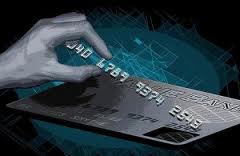Identity Theft
Credit Card Fraud – The Law:
Identity Theft and Credit Card Fraud generally go hand-in-hand from a criminal prosecution perspective.
An extraordinary variety of crimes is absorbed within the purview of this cluster of offenses. The most common type of credit card fraud involves using a stolen credit card or debit card at a retail location. The perpetrator is frequently caught on video engaging in this conduct and is easily prosecuted since the entire transaction is video recorded.
“Credit card duplication” fraud.
On a more sophisticated level, credit fraud may involve the manufacture of magnetic stripes to be placed on the back cards in order to duplicate other credit or debit cards. Traditionally, this involves the use of a “skimmer” to re-code a card. The accused in this type of fraud is usually believed by law enforcement to have stolen access cards or gift cards, recoded them and then to have simply returned the original card to the retailer. This has the effect of making the use of the stolen card almost impossible to trace, since there’s nothing ‘wrong’ with the duplicate card being used.
“Stolen identity” credit card fraud.
The other more common type of credit fraud occurs where a team will apply for credit at various retailers, charge the credit lines to the maximum, keep the merchandise and never pay their bills. These cards usually use false or stolen identities (IDs). It is this form of form of fraud that is often referred to and charged as “identity theft.”
IDENTITY THEFT: What the Prosecutor Must Prove Beyond a Reasonable Doubt:
Jury Instruction 2040. Unauthorized Use of Personal Identity Information
The defendant is charged [in Count ] with the unauthorized use of someone else’s personal identifying information [in violation of Penal Code section 530.5(a)].
To prove that the defendant is guilty of this crime, the People must prove that:
1. The defendant willfully obtained someone else’s personal identifying information;
2. The defendant willfully used that information for an unlawful purpose;
[AND]
3. The defendant used the information without the consent of the person whose identifying information (he/she) was using.
Personal identifying information means <insert relevant items from Pen. Code, § 530.55(b)> or an equivalent form of identification.
[As used here, person means a human being, whether living or dead, or a firm, association, organization, partnership, business trust, company, corporation, limited liability company, public entity, or any other legal entity.]
Someone commits an act willfully when he or she does it willingly or on purpose.
An unlawful purpose includes unlawfully (obtaining/[or] attempting to obtain) (credit[,]/[or] goods[,]/[or] services[,]/[or] real property[,]/ [or] medical information) in the name of the other person without the consent of that person [[or]
[As used here, person means a human being, whether living or dead, or a firm, association, organization, partnership, business trust, company, corporation, limited liability company, public entity, or any other legal entity.]
Someone commits an act willfully when he or she does it willingly or on purpose.
An unlawful purpose includes unlawfully (obtaining/[or] attempting to obtain) (credit[,]/[or] goods[,]/[or] services[,]/[or] real property[,]/ [or] medical information) in the name of the other person without the consent of that person [[or] <insert other unlawful purpose>].
It is not necessary that anyone actually be defrauded or actually suffer a financial, legal, or property loss as a result of the defendant’s acts.
If you or someone you know has been charged with Identity Theft, contact John J. Stanley & Associates at (818) 769-5200 for your free consultation.

